Apistogramma sp. "Z12" from Colombia
October 2022
Another new species from Colombia recently ended up in Japan. Akihiro Shimizu gave it the provisional name A. sp. "Z12", and kindly gave us permission to publish his photos here. Thank you!
3 Males and a female:
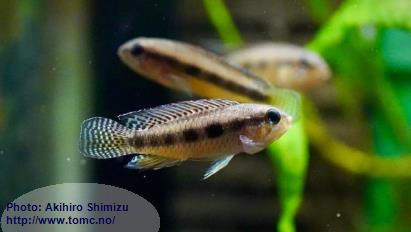
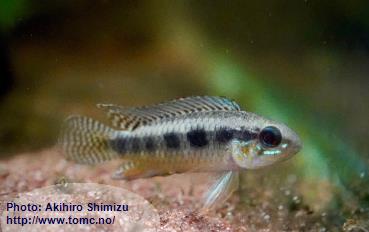
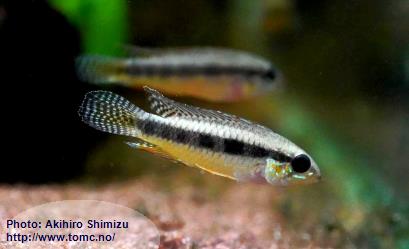
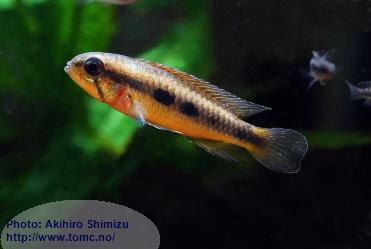
This new species is claimed to be from the Río Inirida drainage in Colombia.
In The Species List we will list it in the Apistogramma-iniridae-Group.
xxxxxxxx
Apistogramma sp. "Ladislao" from Peru: New photos
October 2022
We have new photos from the collector of this exciting species. The fish here looks a bit different from the fish in the photos from Japan, and the collector believes that there are two different forms:
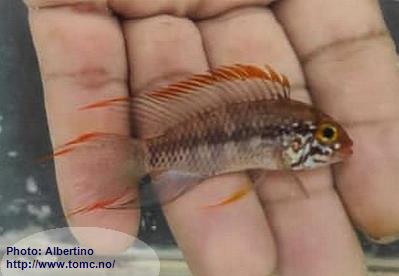
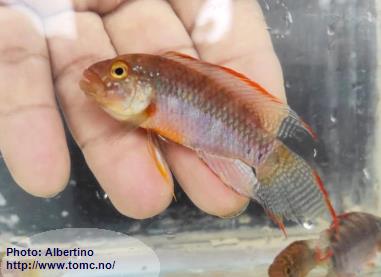
Apistogramma sp. "Ladislao 1"
Apistogramma sp. "Ladislao 2"
The two forms were collected far apart from each other. The differences in colors in the face, size of the lips and spots in the fins might be due to difference in age, size and/or mood, but we don't know anything for sure at the moment.
xxxxxxxx
Apistogramma sp. "Hama-hong" from Colombia
August 2022
This beautiful species was shipped from Colombia to Japan in 2015. It has been quite unknown outside Japan until now.
Especially the females' black markings and shape of the fins makes it quite likely that this is a species of its own.
It was first given the name Apistogramma cf. helkeri (amazing, as apart from similarities in the coloration of the body, it doesn't resemble A. helkeri at all!).
The name used now, A. sp. "Hama-hong", refers to Mr. Hamada, who besides Mr. Kashihara, first kept them in Japan, and "hong" refers to the similarities with A. hongsloi. The first one to breed them was Mr. Hirose (Rino's-Papa).
Takahisa Kudo kindly gave us permission to publish his photos of his fishes. Thank you, Mr. Kudo!
Males:
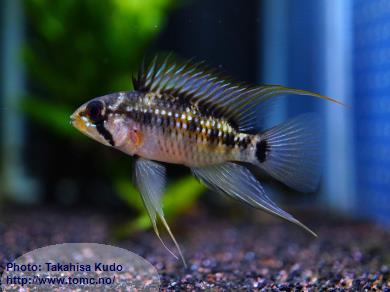
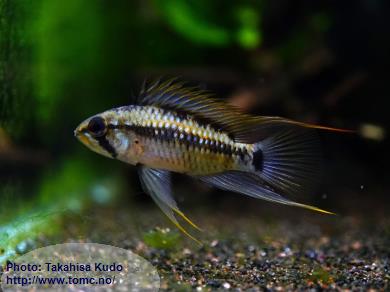
Females:
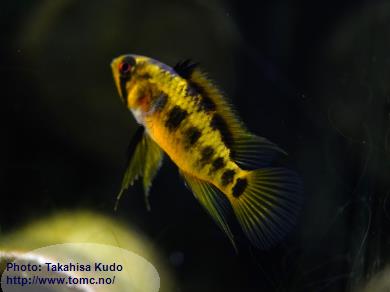

In The Species List we will list it in the Apistogramma-hongsloi-complex.
xxxxxxxx
Apistogramma sp. "Cenepa" from Peru
March 2022
And yet another new exciting form/species found recently in Peru. Akihiro Shimizu again kindly gave us his photos of it.

Males:
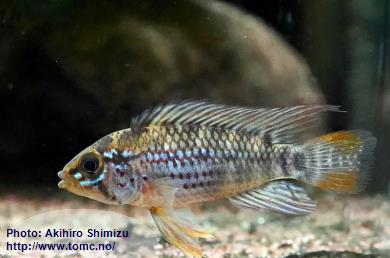
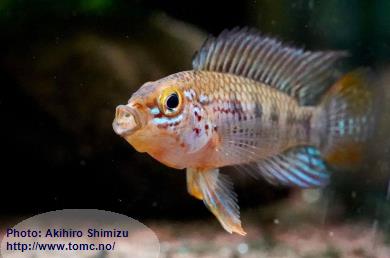
Females:

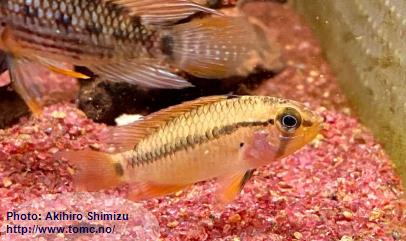
This species/form is probably from the upper Río Marañon system too.
We will list it in the Apistogramma-eunotus-subcomplex.
xxxxxxxx
Apistogramma sp. "Ladislao" from Peru
March 2022
Another new exciting species found recently in Peru. Akihiro Shimizu kindly gave permission to present
his photos of it. (Thank you!)
Males:
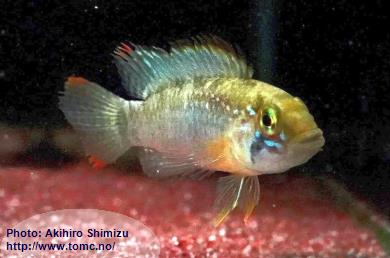
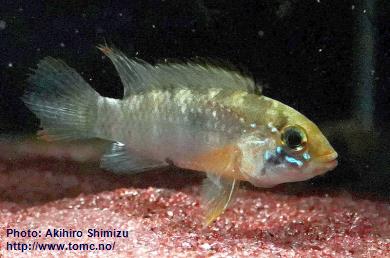
Females:
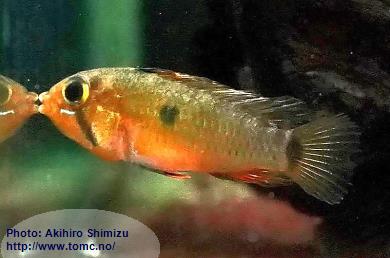
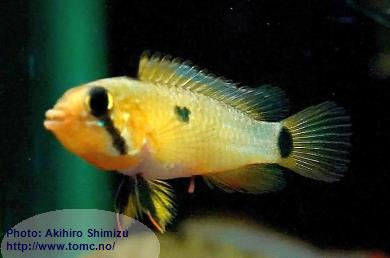
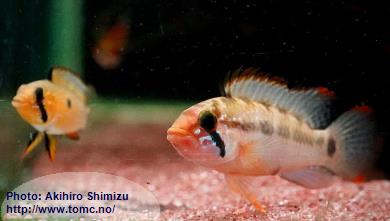
A pair.
It is said to live in the upper Río Marañon system.
We will list it in the Apistogramma-trifasciata-(sub)lineage, and in the Apistogramma-nijsseni-group.
xxxxxxxx
Apistogramma sp. "Achuar" from Peru
February 2022
This new exciting species was very recently found in Peru. The photographers kindly gave permission to present
these photos of it.
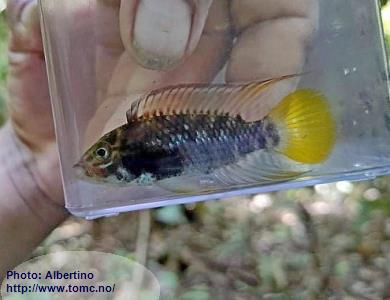
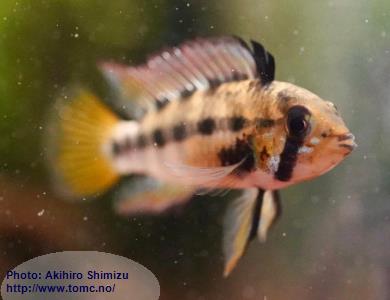
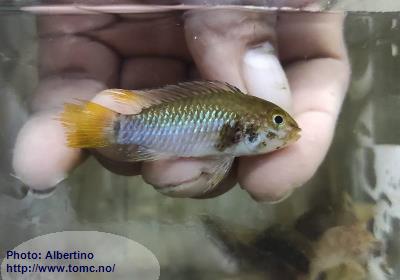
The dark pectoral blotch seems to be characteristic of this species.
One might think that it has the "black blotch syndrome" seen on many wild Apistogramma from Peru, but since the blotch appears on both sexes and several specimens, it is most likely a natural pattern.
It probably lives in the Rio Pastaza system along the Peru/Ecuador border, as this is where the people of the Achuar tribe live.
We will list it in the Apistogramma-cruzi-subcomplex.
xxxxxxxx
Apistogramma sp. "Totoya" from Peru
January 2022
In October 2017 I received the first photos of a new Apistogramma from the Río Algodón drainage, between the rivers Río Napo and Río Putumayo, in Peru:
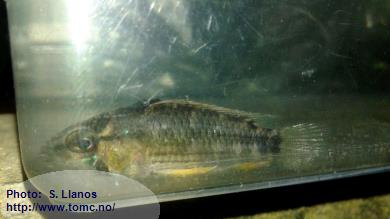
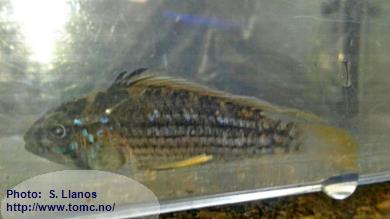
The female seems to have an Apistogramma ortegai-like double caudal spot. The male has some irregularities in the scales on the caudal peduncle, which might indicate some kind of (wild) hybridization(!)
We listed it in the Apistogramma-ortegai-subcomplex.
Recently I received new, beautiful photos of this species/form, from Drayden Farci. (Thank you, Drayden)
Wild male and wild female (with fry):
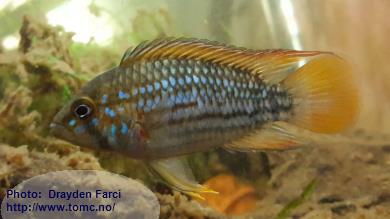
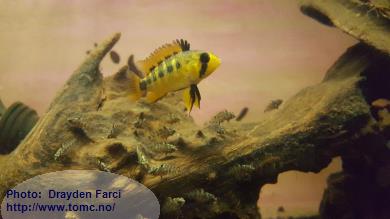
This wild male too shows irregularities in the scales on the caudal peduncle.
And in these photos of F1 males, the deformed scales are even more prominent:
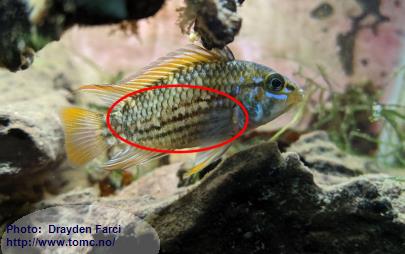
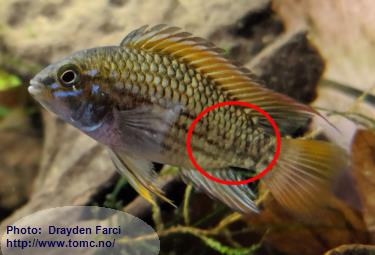
So, who knows? Maybe they are wild hybrids from Apistogramma sp. "Ticuna" and Apistogramma ortegai?
xxxxxxxx
Apistogramma sp. "Bobonaza" from Peru
October 2021
This new exciting species was very recently found in the Río Pastaza drainage, Peru.
It seems to have great similarities with Apistogramma baenschi, but it has a different caudal fin.
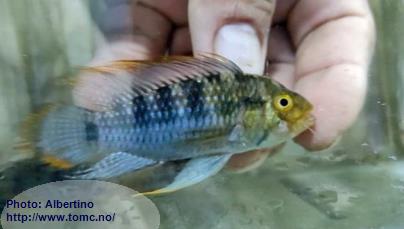
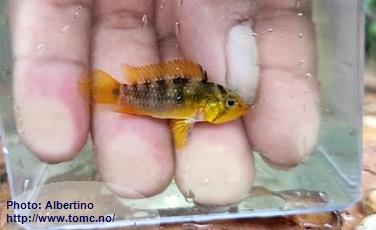
It is listed in the Apistogramma-nijsseni-group.
xxxxxxxx
Apistogramma sp. "Rosa Ines" again
October 2021
New photos of this new exciting species show fish with a low, even dorsal fin and also other differences
from the original A. sp. "Rosa Ines".
We choose to preliminary separate them, by using two different names:
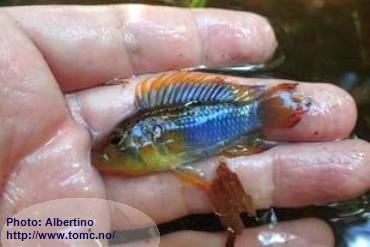
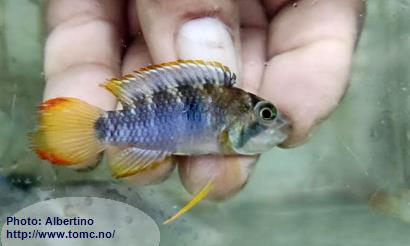
Apistogramma sp. "Rosa Ines 1"
Apistogramma sp. "Rosa Ines 2"
They are both listed in the Apistogramma-nijsseni-group
xxxxxxxx
Apistogramma sp. "Yasuni"
October 2021
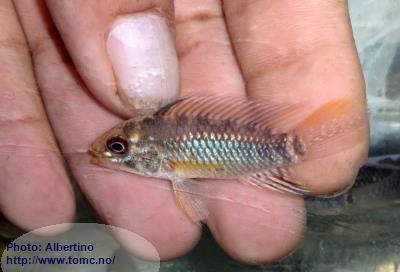
We have listed this species in the Apistogramma-eunotus-subcomplex, but it is said
to have been collected in areas far away from where A.-eunotus-subcomplex forms so far are known to occur.
(tributaries of the Río Ucayali, mouth of the Río Napo, and Río Amazonas of Peru & Colombia.)
Hopefully their origin will be revealed sometime in the future...
xxxxxxxx
Apistogramma sp. "Z11" from Colombia
October 2021
This new species was collected in the Río Putumayo drainage in Colombia. It ended up in one of
Akihiro Shimizu's tanks, in Japan, where it was given the preliminary name.
We were given permission to pubish these photos of it:
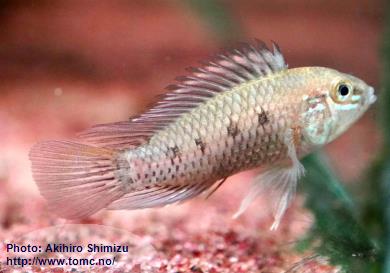

It was collected in the same area as the Apistogramma sp. "D15", and shows both morphological
similarities as well as dissimilarities with this species. We have assigned both species to the
Apistogramma-cruzi-subcomplex in The Species List.
xxxxxxxx
Exciting news from Peru
July 2021
Peru is hard hit by Covid-19. But the fishermen and their families need an income to survive, so some take the chance to travel
a little away from home, and collect fish.
Four exciting Apistogramma have recently been collected:
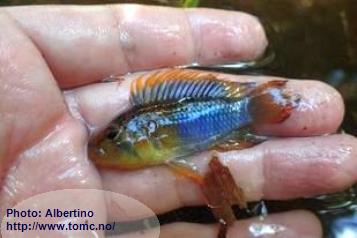
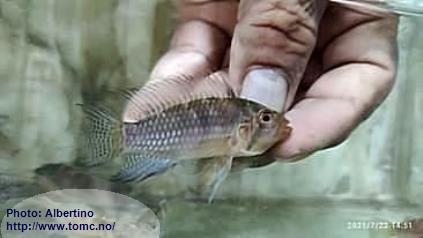
Apistogramma sp. "Rosa Ines"
Apistogramma sp. "Tabatinga"
Apistogramma sp. "Rosa Ines" seems to be a new species in the Apistogramma-nijsseni-Group.
It was collected in remote areas of Peru.
Hopefully we'll see more photos in a month or two!
As the provisional name indicates, the Apistogramma sp. "Tabatinga" lives not far from the Brazilian
town Tabatinga, at Rio Amazonas. This town borders the colombian city of Leticia, and we suspect
Apistogramma sp. "Tabatinga" to be identical to the Apistogramma cf. norberti
(Lyretail), which is found in the Leticia area.
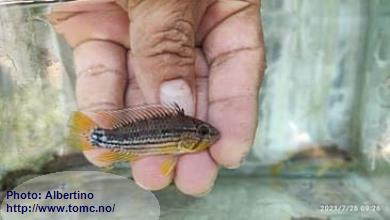
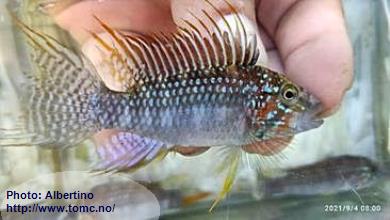
Apistogramma sp. "Ticuna"
Apistogramma sp. "Albertini Maca"
Apistogramma sp. "Ticuna" seems to be a new species in the Apistogramma-eunotus-Complex,
probably in a Subcomplex which forms a bridge between the Apistogramma-cruzi-Subcomplex and
the Apistogramma-ortegai-Subcomplex.
In Japan this species is also known as Apistogramma sp. "Girasol".
Apistogramma sp. "Albertini Maca" looks much like Apistogramma barlowi, but it has a caudal
fin similar to that of Apistogramma megastoma!
In the next revised Species List, we will list it as Apistogramma sp. aff. barlowi (Albertini).
In Japan they use the name Apistogramma sp. "Tony".
xxxxxxxx
Apistogramma sp. "Elzeniense"
May 2021
This new exciting species was found for the second time earlier this year.
It has now been imported to Taiwan, and Apisto Aquarium Taiwan kindly sent us a few photos, with permission to publish them here.


It morphologically shows similarities with species from the Apistogramma-barlowi-Complex, but it was collected in
Brazil, not very far from Manaus!
xxxxxxxx
A miniature dwarf jewel from Brazil
April 2021
These were imported to France, primo 2020. A French friend of mine kindly offered to keep them for me a few weeks,
until we could meet and exchange fishes.
Well, a virus arrived, and never left; the fishes are still in one of my friend's tanks, in France!
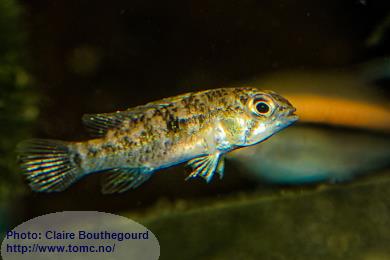
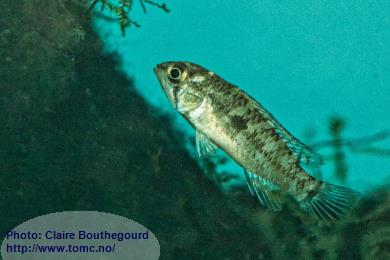
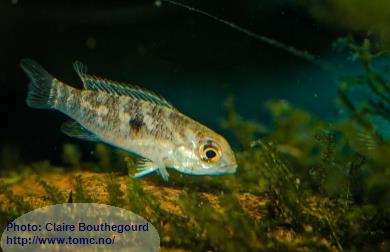
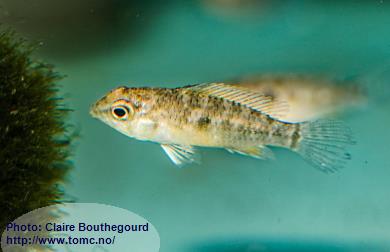
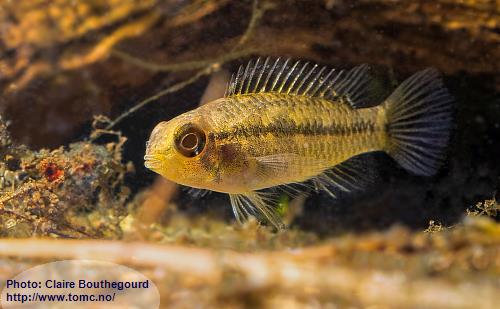
This fish seems to be closely related or identical to Apistogramma wapisana (RÖMER, HAHN & CONRAD 2006).
However, it was collected in the Rio Padauari drainage (Brazil), and this is very far away from the type
locality of A. wapisana (which is in the Boa Vista area).
So we label it Apistogramma cf. wapisana until we know more...
This is a true dwarf, it never exceeds 40 mm TL, and the holotypus of A. wapisana was 28 mm SL.
It shows very little and/or reverse sexual dimorphism, and it has a very special and interesting courtship.
xxxxxxxx
Apistogramma cf. paulmuelleri (Upper Río Marañon)
April 2021
These have been collected in Peru very recently:
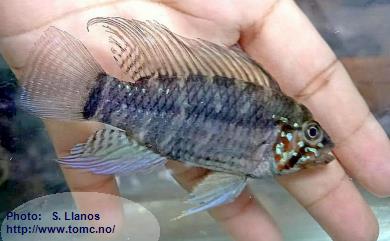
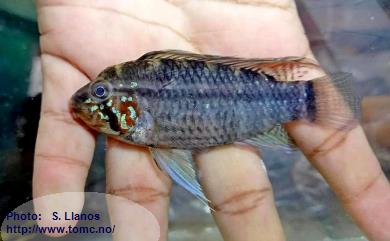
As seen on the photos, adult males have a well developed hump on their forehead.
These fishes have a lot of features in common with Apistogramma paulmuelleri (RÖMER et al. 2013).
The dorsal fin appear higher, and they were collected more than 400 km (as the crow flies) from the type locality of
Apistogramma paulmuelleri, so they are probably a separate species.
xxxxxxxx
Apistogramma sp. "Snow White", what is it?
April 2021
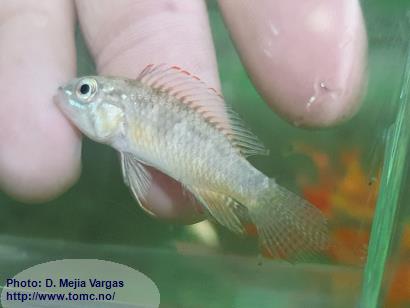
This "Snow White" doesn't only live with the dwarfs, it IS a dwarf.
It was collected in eastern parts of Colombia a few weeks ago.
Hopefully it will show off its black markings and any colors soon, so we can try to identify it!
I do expect a more ID-friendly appearence when it, together with some congeners, most
likely will arrive one of my aquariums very soon...
xxxxxxxx
Is Apistogramma sp. "D58" a facultative mouth-breeding species?
January 2021
We collected this species for the first time in December 2019.
I brought some of them home:
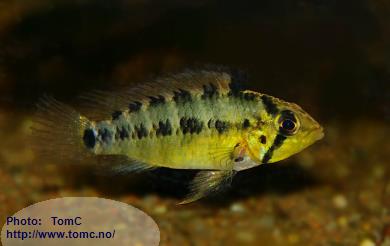
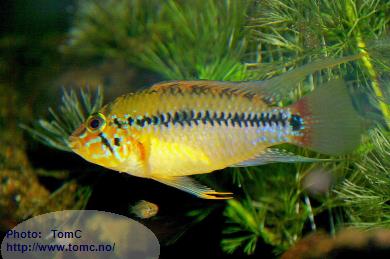
They spawned and raised their offspring in my tanks (photos in the
BLOG
); I never noticed any mouth-brooding from either of the parents.
They were re-collected medio January 2021 (just a few days ago). There the collector noticed twice that in bags
where there were yellow colored females, suddenly lots of very small, tiny fry appeared!
There seems to be no other possible explanation than that the mothers released them from their mouths.
So most likely Apistogramma sp. "D58" is another facultative mouth-breeding Apistogramma-species!
xxxxxxxx